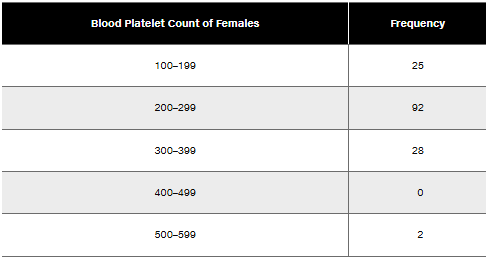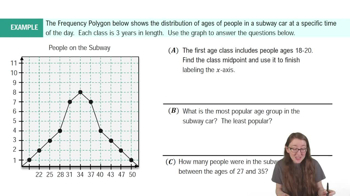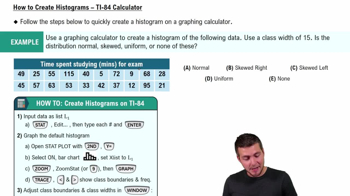Here are the essential concepts you must grasp in order to answer the question correctly.
Class Width
Class width refers to the range of values that each class interval covers in a frequency distribution. It is calculated by subtracting the lower boundary of a class from its upper boundary. For example, in the class interval 100-199, the class width is 199 - 100 = 99. Understanding class width is essential for accurately interpreting the distribution of data.
Recommended video:
How to Create Frequency Distributions Example 2
Class Midpoint
The class midpoint is the value that lies in the middle of a class interval and is calculated by averaging the upper and lower boundaries of the class. For instance, for the class interval 100-199, the midpoint is (100 + 199) / 2 = 149.5. Class midpoints are useful for summarizing data and performing further statistical analysis.
Recommended video:
Frequency Polygons Example 1
Class Boundaries
Class boundaries are the values that separate one class interval from another in a frequency distribution. They are typically calculated by taking the average of the upper limit of one class and the lower limit of the next class. For example, the boundary between the classes 100-199 and 200-299 would be 199.5. Class boundaries help in accurately grouping data and avoiding overlaps between classes.
Recommended video:
How to Create Histogram - TI-84 Calculator

 Verified step by step guidance
Verified step by step guidance Verified video answer for a similar problem:
Verified video answer for a similar problem:



 6:38m
6:38m